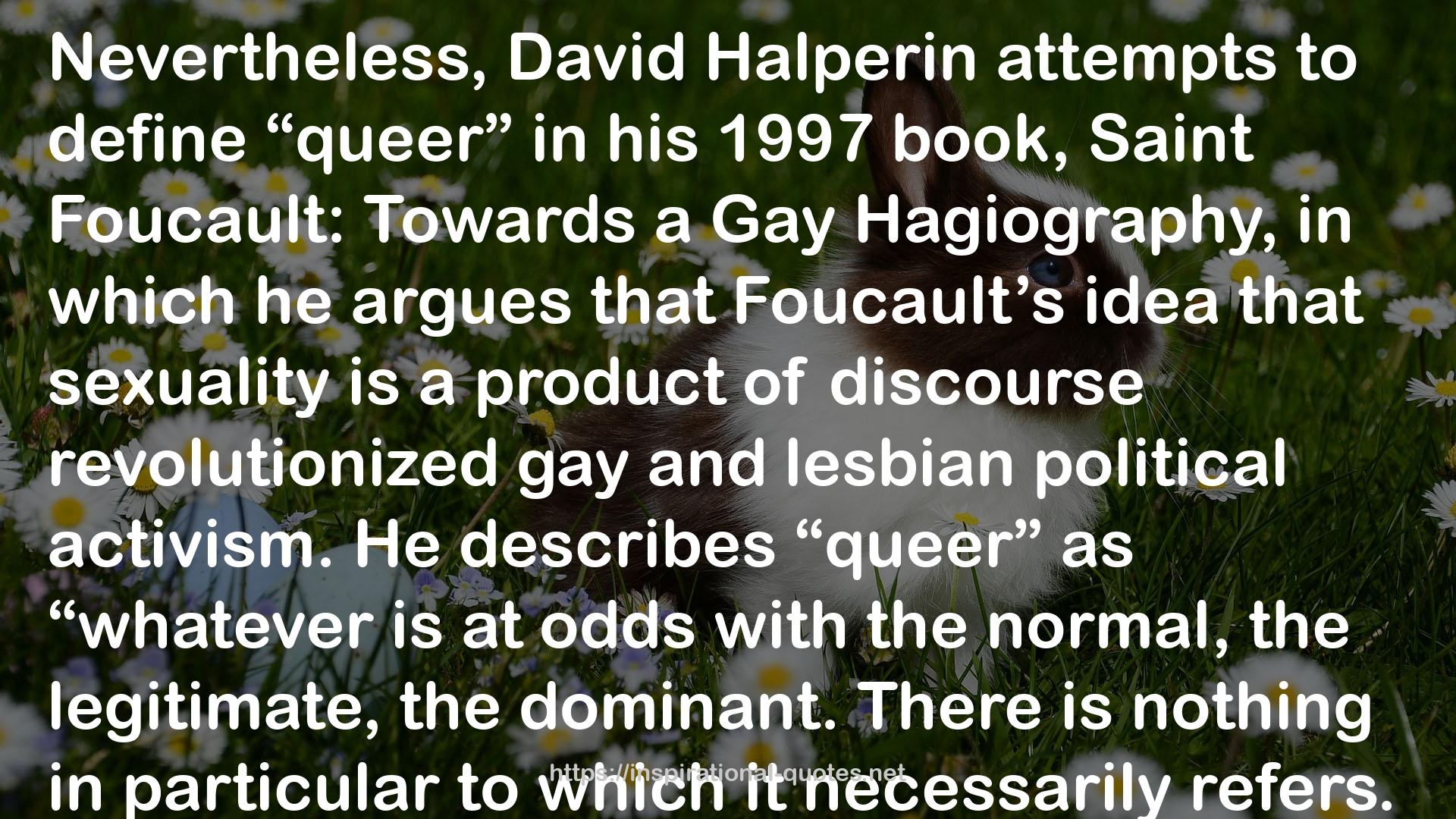" Nevertheless, David Halperin attempts to define “queer” in his 1997 book, Saint Foucault: Towards a Gay Hagiography, in which he argues that Foucault’s idea that sexuality is a product of discourse revolutionized gay and lesbian political activism. He describes “queer” as “whatever is at odds with the normal, the legitimate, the dominant. There is nothing in particular to which it necessarily refers. It is an identity without an essence.”8 (emphasis in original) Because the central feature of queer Theory is that it resists categorization and distrusts language, it is generally difficult to work with. Queer Theory is not only resistant to definition in the usual sense, but also to functional definitions based on what it does. Papers that use queer Theory usually begin by examining an idea, problematizing it in queer (or “queering” or “genderfucking”9) ways, and eventually concluding that there can be no conclusions. As Annemarie Jagose, the author of Queer Theory: An Introduction, puts it, “It is not simply that queer has yet to solidify and take on a more consistent profile, but rather that its definitional indeterminacy, its elasticity, is one of its constituent characteristics.”10 The incoherence of queer Theory is an intentional feature, not a bug. "
― Helen Pluckrose , Cynical Theories: How Activist Scholarship Made Everything about Race, Gender, and Identity—and Why This Harms Everybody
